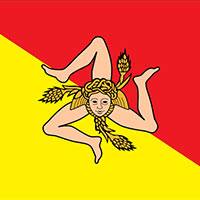Earthquakes in Sicily
Eyewitness: "Then came an earthquake so horrible and ghastly that the soil undulated like the waves of a stormy sea, and the mountains danced as if drunk, and the city collapsed in one miserable moment killing more than a thousand people."
(As quoted by Stephen Tobriner: The Genesis of Noto: An Eighteenth-century Sicilian City)
Earthquakes in Sicily
- On 11. januar 1693 Sicily was struck by an earthquake destroying more than 70 cities and killing 60.000 people. Whole cities had to be rebuilt.
- 1726: Earthquake of Terrasini caused much damage to the church of San Salvatore. Reconstruction had to be done in Palermo.
- 1751
- 1783: The 1783 Calabrian earthquakes were a sequence of five strong earthquakes that hit the region of Calabria in southern Italy (then part of the Kingdom of Naples), the first two of which produced significant tsunamis. They occured on February 5, 6 and 7, and March 1 and 28. The February 5 earthquake, with an estimated magnitude of 7.0, affected a large area including most of the southern Italian peninsula and shook the whole island of Sicily. Many villages were damaged and as many as 180 almost completely destroyed, with more than 25,000 casualties. A tsunami affected the coastline on both sides of the Straits of Messina, destroying the harbour walls at Messina. The earthquake had already caused widespread death and destruction in Messina. Homes were razed to the ground, the medieval Duomo was badly damaged and most of the historic buildings were reduced to rubble. During his Italian journey, Goethe and his companions arrived in Messina, a city still bearing the scars of the devastating earthquake of 1783. Unfamiliar with the area, they decided to spend their first night in the quarters of their vetturino (coachman). This exposed them to the grim reality of a the city Messina in ruins. As they rode toward their lodging, they passed through a quarter-hour of continuous rubble, an unbroken landscape of destruction, before finally reaching an inn—the only building in the area that had been rebuilt. From the upper-story windows, they could see nothing but a jagged expanse of desolation. Beyond the confines of this solitary refuge, no signs of human or animal life were visible. The night was eerily silent, heightening the sense of abandonment.
- March 1823 see link
- 1908 (Messina)
- 15 January 1962: An earthquake (6.1 Richter) near Castelvetrano killed 370 people and 70.000 were made homeless.
Noto Antica
Noto Antica was a city of Sicel origin; Sicel tombs can be seen to the left as you approach the ruined city. Noto Anica lies about 10 kilometres to the north of the baroque city. It was built on Mount Alveria. The Romans called it Netum.
According to legend, Daedalus stopped here after his flight over the Ionian Sea, as well as Hercules, after his seventh task. In the Roman era, it opposed praetor Verres.
In 866 it was conquered by the Arabs, who made it a capital city of one of three districts of the island (the Val di Noto).
In 1091, it became the last Muslim stronghold in Sicily to fall to the Normans.
"The scant ruins, reduced to rubble and overgrown, are very romantic and provide inspiration for artists, photographers and writers," The Blue Guide Sicily states (p. 352). To me, Noto Antica was one of the few disappointments during my stay in Sicily in 2015. I found few visually interesting motives to photograph, and felt that the place lacked intensity.
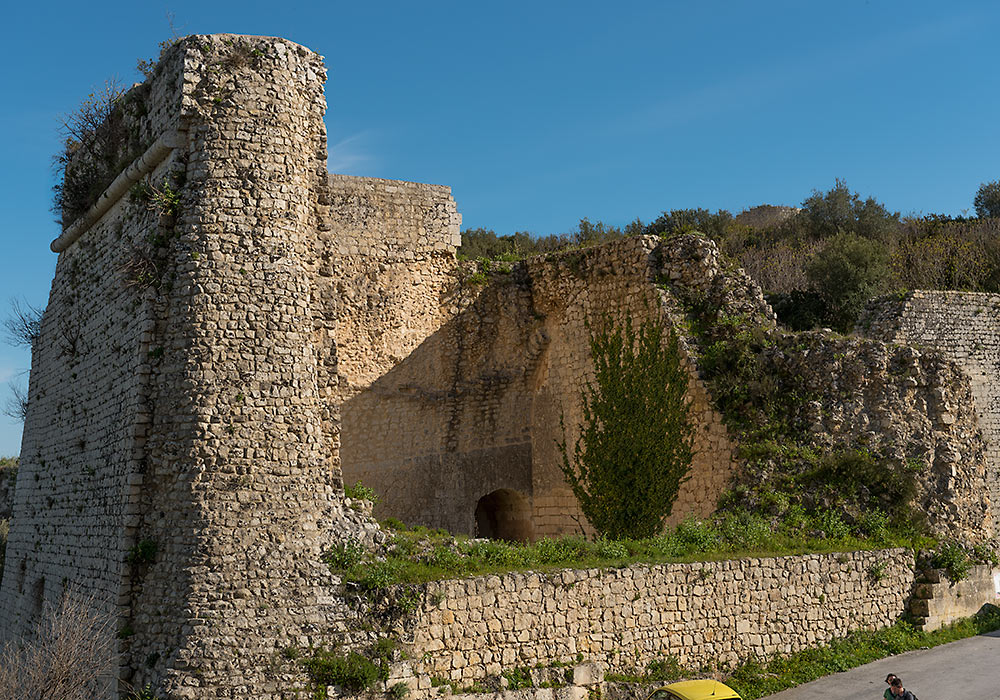
Part of the high wall in Noto Antica, next to the Parking.
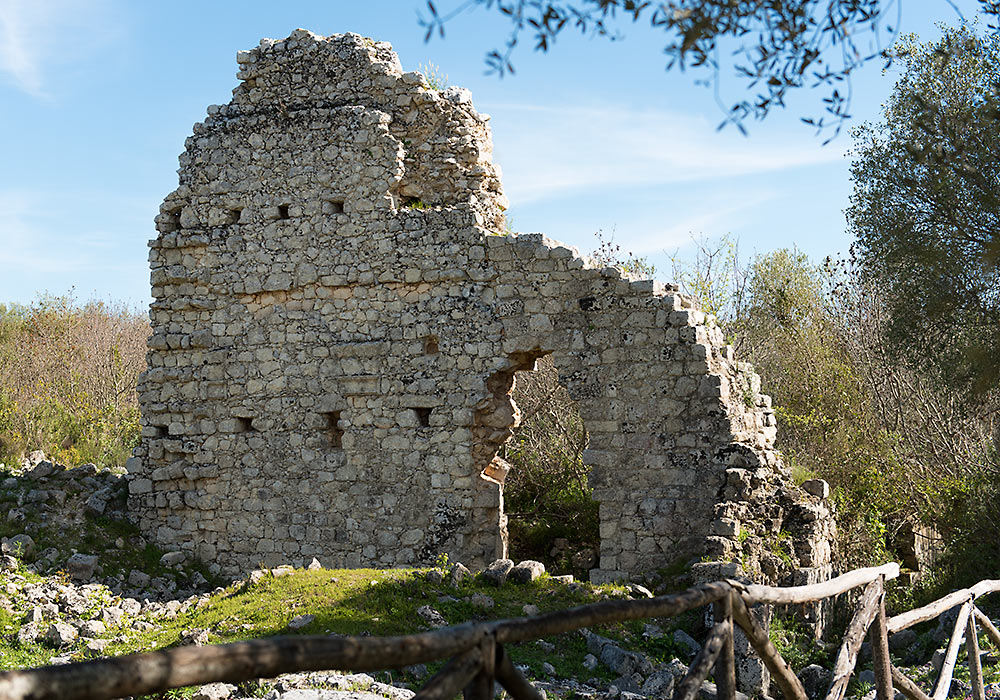
Chiesa e Collegio dei Gesuiti, Noto Antica.
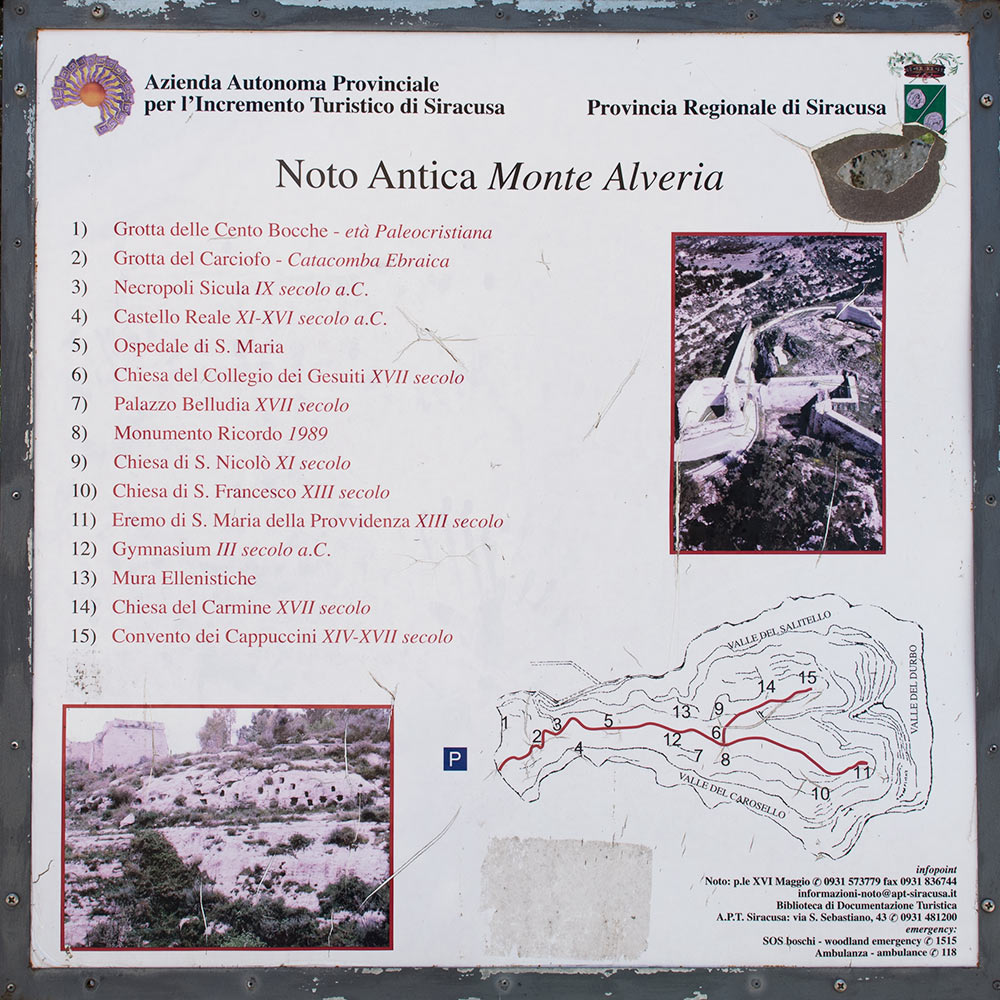
Tourist information at Noto Antica.
The New Noto
Together with seven other cities in the Val di Noto, the baroque city Noto is listed among the UNESCO World Heritage Sites.
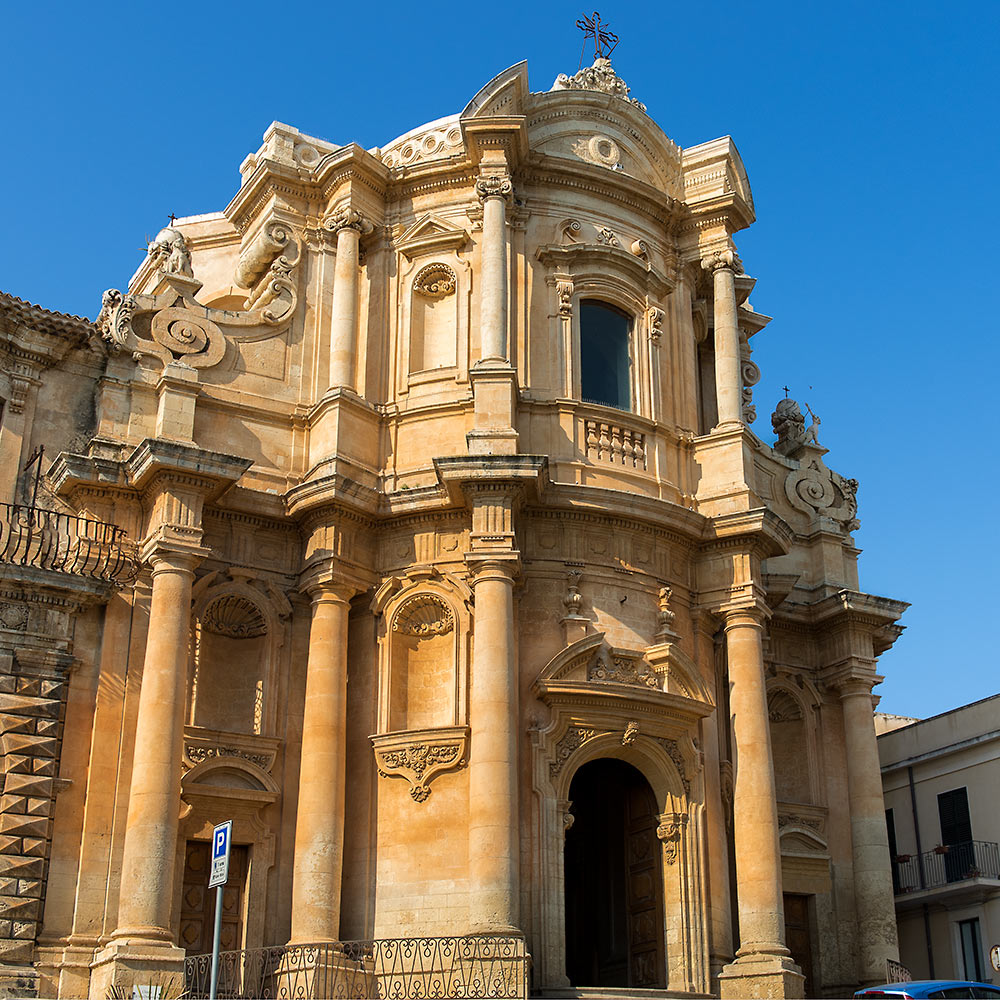
The spectacular facade of the church of San Domenico by Rosario Gagliardi (1690-c. 1762) from Syracuse, "a unique figure who operated in isolation in south-eastern Sicily, and yet was part of the international scene." (Maria Giuffrè: The Baroque Architecture of Sicily) Gagliardi's most important work is probably the cathedral in Ragusa Ibla, Duomo di San Giorgio (built 1744-75). According to Maria Giuffrè, "the true breadth and originality of Gagliardi's architectural designs is only apparent in his numerous drawings, which were probably intended for didactic treatise, or perhaps as a personal dossier to display his ideas, and which can only rarely be associated with actual constructions."
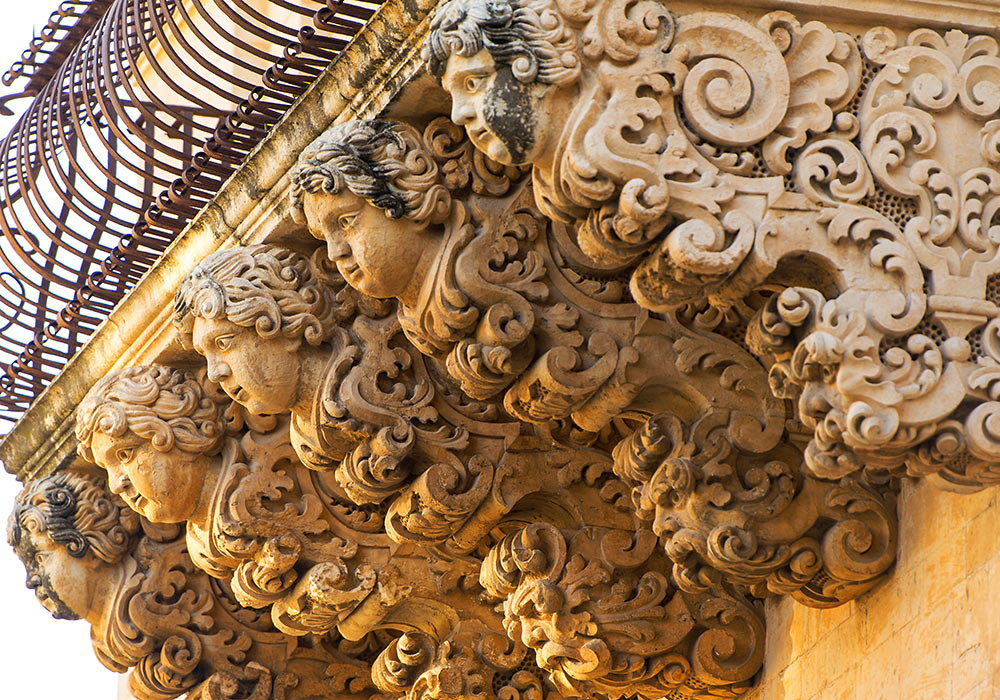
Detail of a balcony on Palazzo Nicolaci in Noto.
Built after the devastating earthquake in 1693, Noto – planned on a grid system by Giovanni Battista Landolina – has numerous baroque gems to offer tourists, from the breathtaking cathedral (duomo) with its monumental stairway to the incredibly charming baroque balconies.
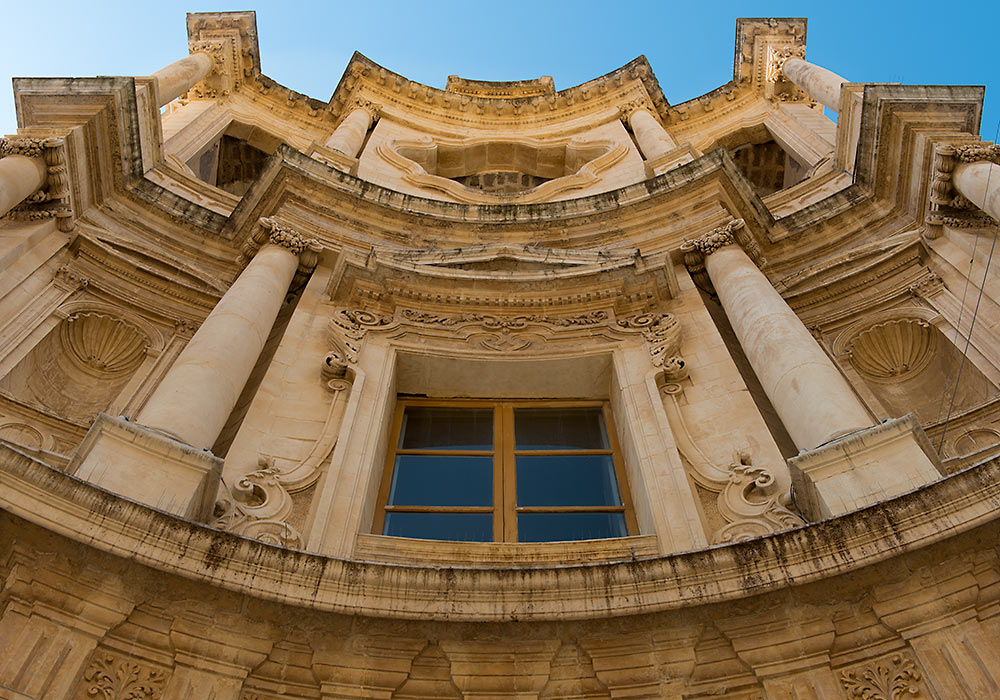
Chiesa di S. Carlo.
The late baroque towns of the Val di Noto in South-Eastern Sicily that are inscribed on the UNESCO World Heritage List
The late baroque towns of the Val di Noto in South-Eastern Sicily that are inscribed on the UNESCO World Heritage List are Caltagirone, Militello Val di Catania, Catania, Modica, Noto, Palazzolo, Ragusa and Scicli. These towns were all rebuilt after the earthquake in 1693 on or beside towns. According to UNESCO, they represent a considerable collective undertaking, successfully carried out at a high level of architectural and artistic achievement. Keeping within the late Baroque style of the day, they also depict distinctive innovations in town planning and urban building.
The late baroque towns inscribed on the UNESCO World Heritage List represents the culmination and final flowering of Baroque art in Europe. The exceptional quality of the late Baroque art and architecture in the Val di Noto lies in its geographical and chronological homogeneity, as well as its quantity, the result of the 1693 earthquake in this region. The towns were all in existence in medieval times, characteristically around a castle and with monastic foundations.
Sicilian Sites on UNESCO's World Heritage List
- Agrigento: Archaeological Area of Agrigento (UNESCO)
- Aeolian Islands: Isole Eolie. The group consists of seven islands (Lipari, Vulcano, Salina, Stromboli, Filicudi, Alicudi and Panarea) and five small islets (Basiluzzo, Dattilo, Lisca Nera, Bottaro and Lisca Bianca) in the vicinity of Panarea. (UNESCO)
- Caltagirone (UNESCO)
- Catania (UNESCO)
- Cefalù Cathedral
- Militello Val di Catania (UNESCO)
- Modica (UNESCO)
- Monreale Cathedral
- Mount Etna (UNESCO)
- Noto (UNESCO)
- Palermo: Palazzo dei Normanni (The Norman Palace)
- Palermo: Cappella Palatina (The Palatine Chapel in the Norman Palace)
- Palermo: Church of San Giovanni degli Eremiti
- Palermo: Church of Santa Maria dell'Ammiraglio (also known as the Martorana)
- Palermo: Church of San Cataldo
- Palermo: Cathedral of Palermo
- Palermo: The Zisa Palace (La Zisa)
- Palermo: The Cuba Palace (La Cuba)
- Palazzolo Acreide (UNESCO)
- Ragusa (UNESCO)
- Scicli (UNESCO)
- Syracuse and the Rocky Necropolis of Pantalica (UNESCO)
Val di Noto

